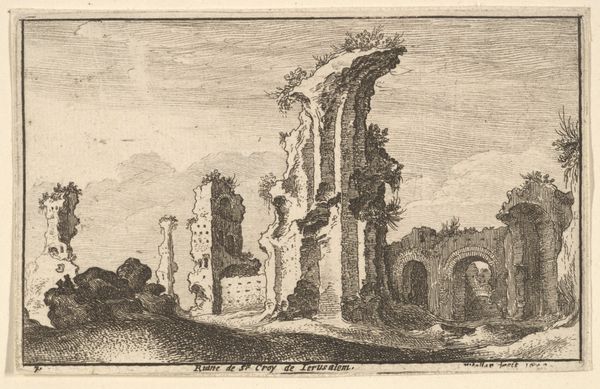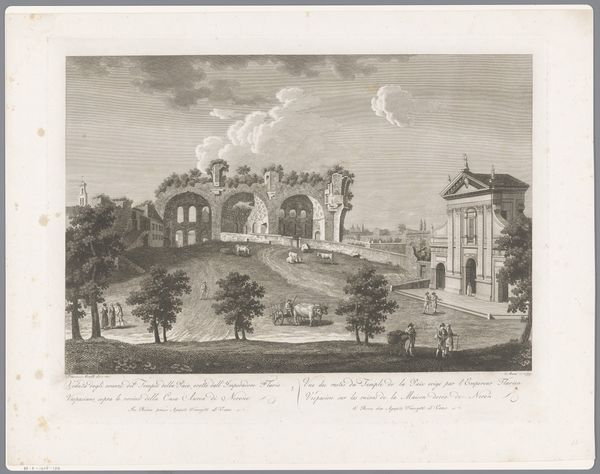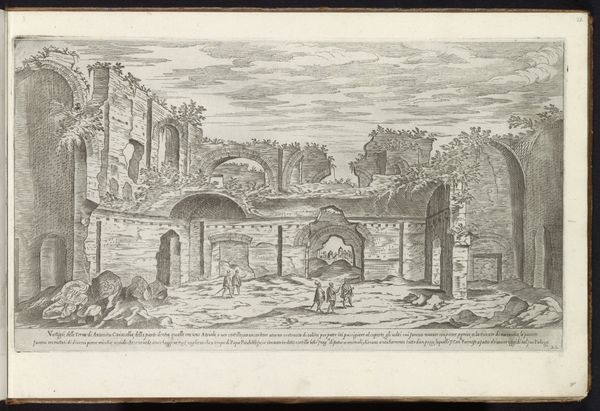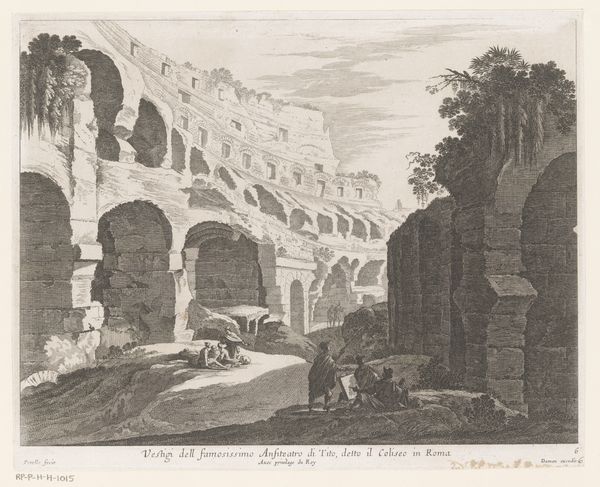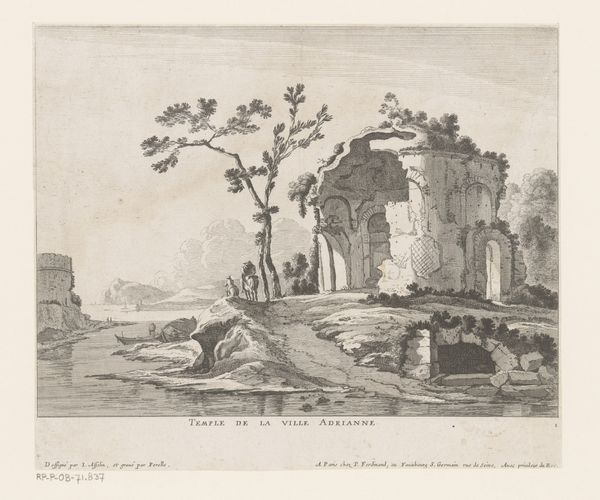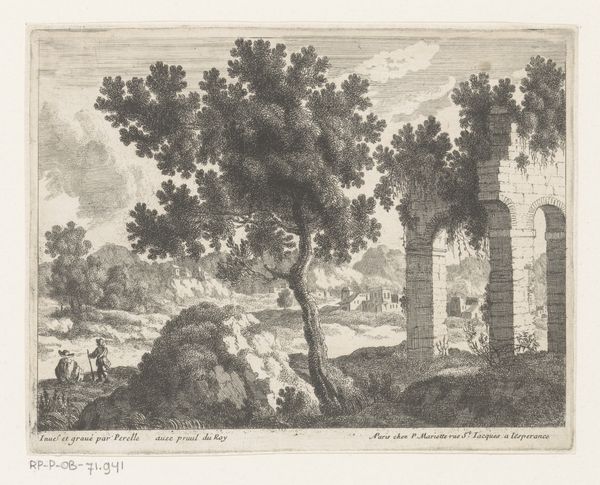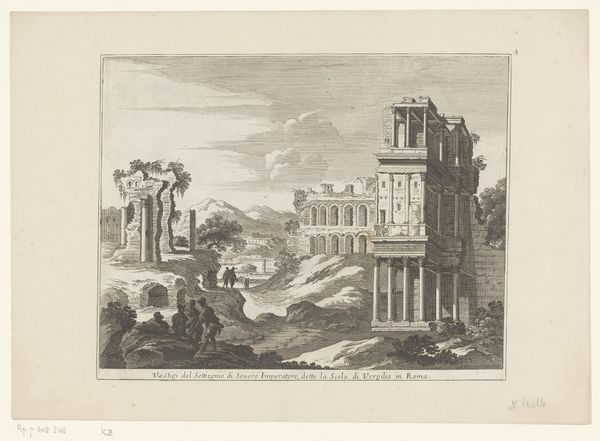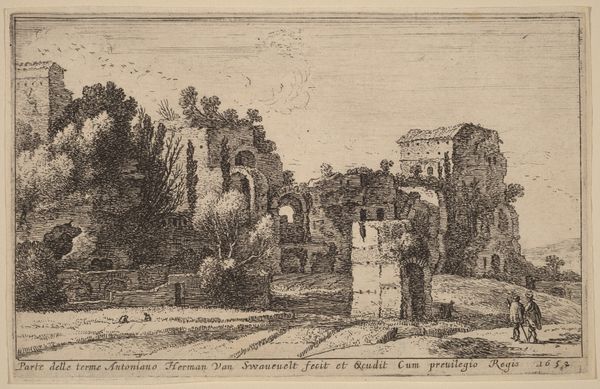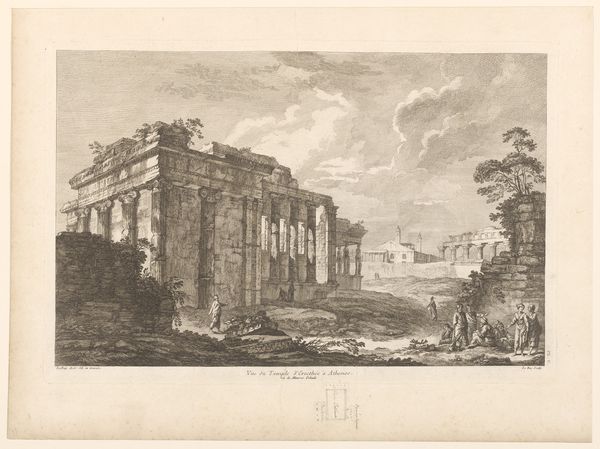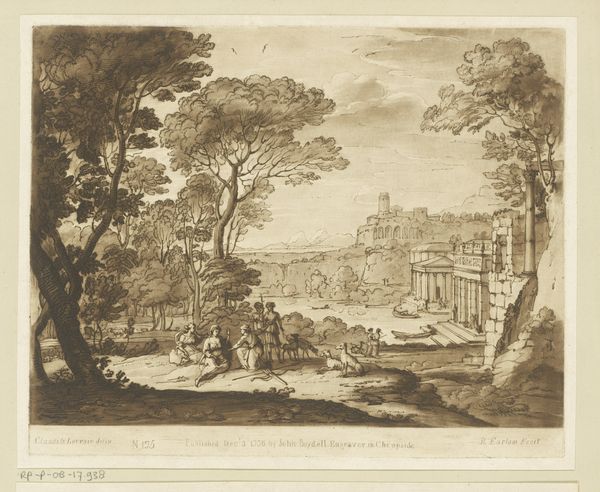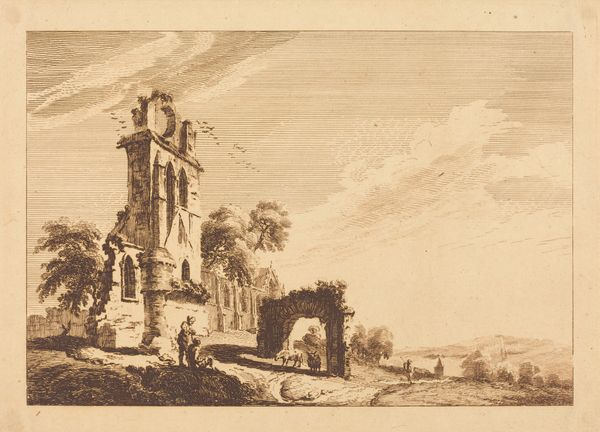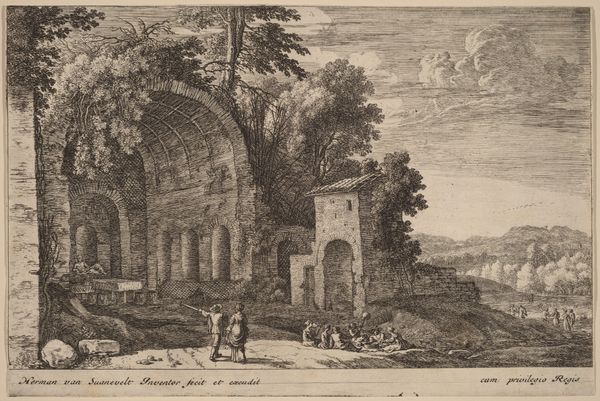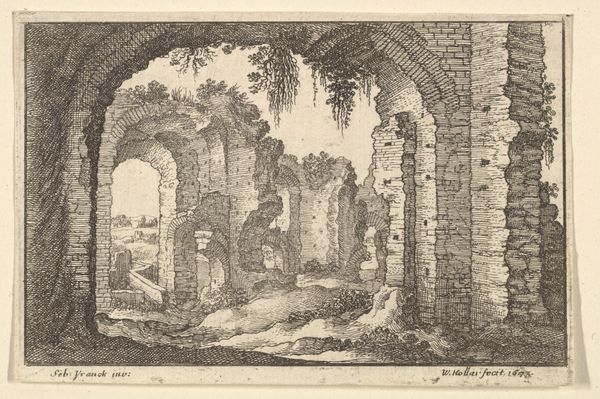
drawing, engraving, architecture
#
drawing
#
baroque
#
landscape
#
cityscape
#
engraving
#
architecture
Dimensions: height 250 mm, width 312 mm
Copyright: Rijks Museum: Open Domain
Curator: Nicolas Perelle created this engraving titled, "Gezicht op de thermen van Diocletianus," sometime between 1640 and 1660. Editor: It’s fascinating how the detailed lines contrast so starkly against the emptiness of the sky, almost rendering the architectural elements as ghostly remnants. Curator: Indeed. Perelle’s perspective offers not just a visual record but a meditation on power, history, and the city of Rome itself. Consider the figures in the foreground, likely nobles or Grand Tourists. They symbolize a kind of continuation of imperial interest and appropriation. Editor: I’m struck by the deliberate arrangement of light and shadow that calls attention to the arches—the very skeleton of the baths. It is almost as if Perelle invites us to explore how architectural language can communicate profound social commentary. Curator: Precisely! Think about the context: These baths were a public space meant to serve the social needs of the many, yet here they stand, ruined and observed by what seems to be a privileged few. Editor: Do you see the couple standing silently just to the right of the ruin? How can we interpret that juxtaposition of decay and vitality? The whole design seems almost…staged. Curator: That placement likely reflects how Baroque art served specific political agendas and narratives. In depicting Rome, Perelle's intention extended beyond mere observation, engaging with then-current debates around authority, societal transformation, and, naturally, spectatorship itself. Editor: What do you make of the distant, dream-like quality of the city center? How much artistic liberty has he employed, do you think? It has an almost… separate reality about it. Curator: I think Perelle blurs fact and idealized fiction. He acknowledges time’s impact while simultaneously commenting on contemporary social structures. He's reminding us that even ruins tell stories of social hierarchy and enduring legacy. Editor: After taking a closer look at how carefully Perelle considered form, one cannot but feel humbled by our place in the seemingly endless river of social history.
Comments
No comments
Be the first to comment and join the conversation on the ultimate creative platform.
